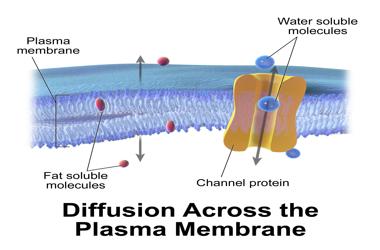If two solutions (mixture) of different concentrations is separated by a membrane then the rate of diffusion between two solutions will depend on the nature of the membrane. Usually we find three types of membrane in plants: –

(i) Permeable Membrane: Molecules of both solute and solvent can be diffused through this membrane. Cell wall, made of cellulose, is of this type.
(ii) Selectively permeable (Semi permeable) membrane: Only the solvent molecules can diffuse through this membrane, not the solute molecules. Cell membrane is a semi permeable membrane.
(iii) Impermeable membrane: molecules of both solute and solvent are impenneable (can not pass through = can not diffuse) through this membrane. Cell wall coated with cutine or suberine is impermeable membrane.
Importance of diffusion: Diffusion plays a great role in plant life. CO2 – necessary compound for photosynthesis is absorbed from air (atmosphere) by diffusion process. The process happens in the spongy parenchyma of leaves. Oxygen – necessary for respiration, is also intakes from air by diffusion. Movement of water and mineral salts in the plant body takes place by diffusion. Diffusion also responsible for loss of water from the aerial shoot of the plant.













